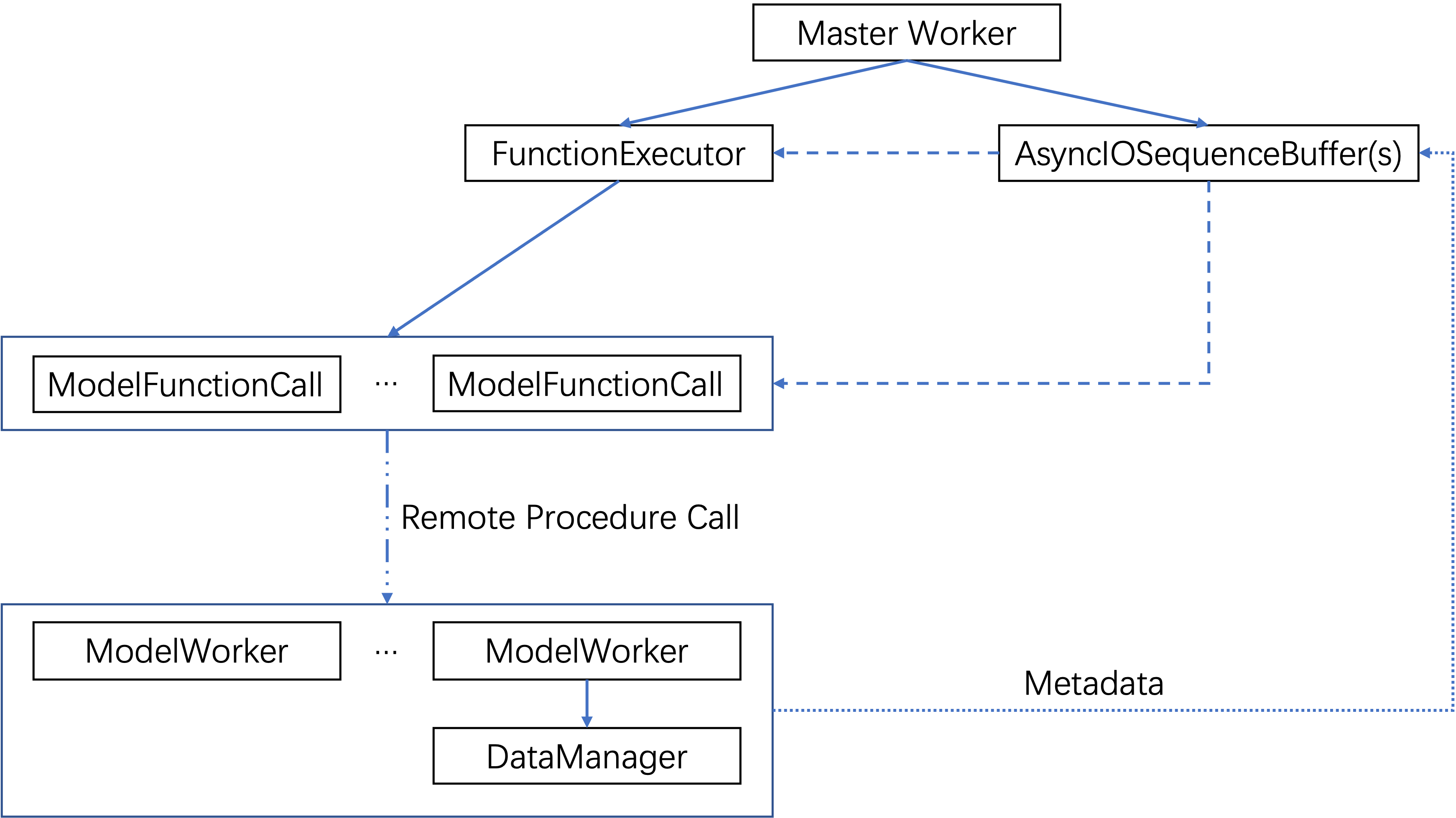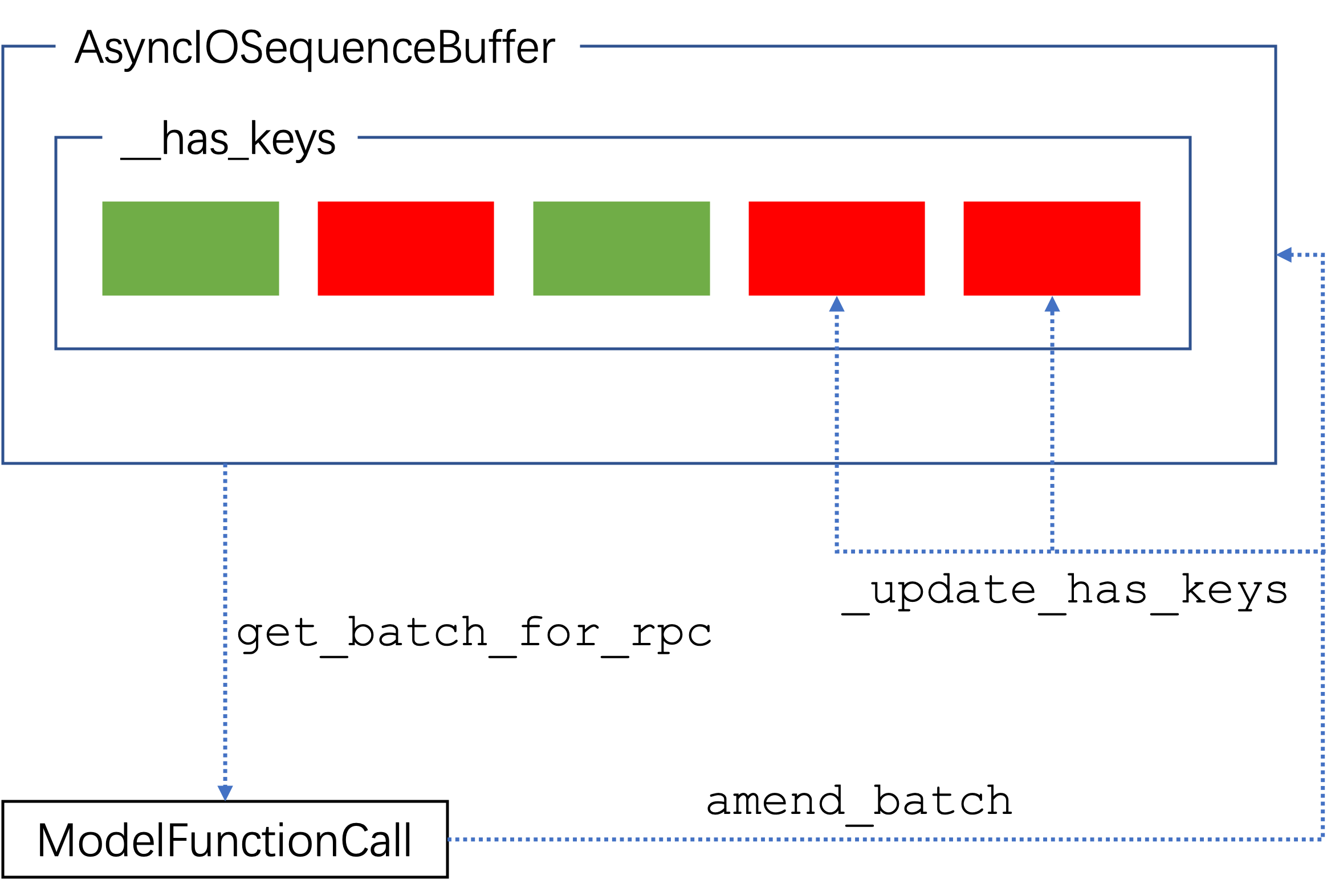Master Worker#
Overview#

The trainer part of AReaL consists of a single master worker coordinating multiple model workers.
An RL algorithm typically contains several model function calls (MFCs) that need to be executed in a certain order. For example in (synchronous) PPO,
actor_gengenerates responses given a batch of user prompts;ref_infcomputes the log-probabilities of the tokens under the reference policy;rew_infcomputes the rewards of the responses;actor_trainupdates the policy with the PPO learning objective.
Here model function calls 2 and 3 depends on the output of 1. Model function call 4 depends on the outputs of 1, 2, and 3.
Note
The actor_gen and rew_inf MFC are eliminated for asynchronous RL and executed on the rollout side in a streaming manner.
The master worker will only see consequent MFCs. The results of previous MFCs will be loaded from the StreamDataset.
The MFCs are coordinated by a FunctionExecutor instance. It creates a
ModelFunctionCall instance for each MFC. The actual computation is performed on model
workers via remote procedure call.
Buffer and MFC Execution Order#

The master worker creates a AsyncIOSequenceBuffer, which is referenced by the
FunctionExecutor and the ModelFunctionCall’s. The buffer is responsible for managing
(meta)data and deciding the execution order of the MFCs.
Each datapoint can be seen as a dict of tensors. For example, the keys may include
packed_prompts and task_ids. Recall that some MFC may rely on the output of another.
For example in PPO, the MFC ref_inf requires packed_input_ids, which is not
presented initially. Instead, packed_input_ids appears as one of the results of the
MFC actor_gen.
The buffer keeps track of the available keys of each datapoint. Each
ModelFunctionCallinstance obtains its next batch via self.get_batch_for_rpc, which
waits for enough datapoints with all the required keys. This means that it would not
start execution until all required keys are ready. After a model function call
execution, it calls self.amend_batch and updates the corresponding datapoints with new
keys.
While some keys are the results of MFCs, some are loaded from the dataset via
FunctionExecutor.load_data. Also note that instead of the actual data, the buffer
stores only metadata (data indices, keys, etc.) to reduce the cost of data transfer.
